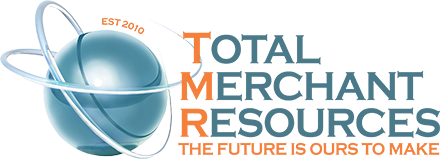
Navigating the world of business loans can feel overwhelming, especially with so many options available. Whether you’re looking to expand your business, buy new equipment, or manage day-to-day expenses, choosing the right loan is essential to reaching your goals. Understanding different loan options helps you make informed decisions that align with your business needs.
Loans come in various forms, each catering to different financial situations and objectives. From term loans with fixed payments to flexible lines of credit and specialized equipment loans, each type has unique features. Knowing these differences allows business owners to select loans that not only meet immediate financial requirements but also support long-term growth and stability.
Choosing the best loan involves assessing your business’s individual needs, size, and financial health. Aligning the right loan with your goals ensures that your business can thrive, making it crucial to understand how each loan type can benefit you the most. This guide will help shine a light on your options and steer your business towards financial success.
Understanding Different Loan Types
When exploring loans, it’s important to know the main types available and how they function. Term loans are a popular choice for those looking to borrow a specific sum of money with a set repayment schedule. They often come with fixed or variable interest rates and are paid back over a pre-determined period. These loans are ideal for businesses needing substantial capital quickly, such as for expansion or significant inventory purchases.
Lines of credit offer flexibility, allowing businesses to access funds up to a specified limit. Unlike term loans, you draw and pay interest only on the amount you use, making them perfect for managing short-term cash flow issues. Interest rates on lines of credit can be competitive but vary based on the business’s creditworthiness.
For businesses that need specific machinery or technology, equipment loans are designed to fund these purchases. They typically require the equipment as collateral and come with lower interest rates due to the reduced risk. This loan type suits companies that need to keep cash flow healthy while obtaining necessary gear for operations.
Choosing the right loan depends on business needs. Term loans fit those seeking one-time, larger investments, while lines of credit are great for everyday operational liquidity. Equipment loans cater to firms looking to finance essential assets without draining cash reserves.
Assessing Your Business Needs
Determining the best loan requires careful appraisal of your business’s current situation. Key factors include the loan amount required, what the funds will be used for, and how they fit into your strategic goals. For instance, a small amount for inventory might call for a line of credit, while a major expansion might need a term loan.
Considerations also include the size of your business and financial health. Larger, established firms with solid credit may have access to better loan terms than newer companies. Assessing financial statements and cash flow projections helps gauge the amount your business can realistically afford to borrow and repay.
Understanding the alignment between loan types and business objectives is crucial. Short-term needs, like unexpected expenses, might benefit from the flexibility of a line of credit. Long-term strategic plans, such as launching a new product line, could demand the structured funding of a term loan.
Ultimately, selecting the right loan revolves around knowing your business’s strengths and weaknesses. Reflecting on these factors ensures that you not only meet current needs but also drive future growth efficiently. Balancing these elements puts your business in a position for success.
Comparing Secured and Unsecured Loans
Understanding the difference between secured and unsecured loans helps businesses choose the right financial tool. Secured loans require collateral, an asset that guarantees the loan. This could be property, equipment, or inventory. They often come with lower interest rates because they pose less risk to lenders. The risk lies in the possibility of losing the asset if the loan is not repaid.
Unsecured loans do not require collateral. These depend mostly on the business’s creditworthiness. Because they are riskier for lenders, they may have higher interest rates and stricter borrowing conditions. They might fit businesses that do not have significant assets to secure a loan but have a strong credit history.
Choosing between these loans depends on business circumstances. Secured loans are ideal for businesses willing to offer collateral and typically need larger amounts at lower rates. Unsecured loans might suit smaller or newer businesses looking to borrow modest sums without risking assets. Carefully considering the benefits and risks of each type helps businesses align their choice with their specific needs and financial situations.
Strategizing Loan Applications
Successfully applying for a loan involves strategic preparation and presentation. Start by gathering necessary documentation, such as financial statements, tax returns, and business plans. These documents prove the business’s ability to repay the loan and its plans for growth.
To strengthen an application, work on improving credit scores. Pay bills on time and reduce debt where possible. A clear, concise business plan that outlines how the borrowed funds will be used and expected outcomes can improve the chance of approval. Be prepared to explain financials and future projections clearly during the application process.
Choosing the right lender to work with also significantly impacts loan success. Research different lenders’ terms and conditions to find a fitting match. Building relationships with potential lenders before applying can give insights into their lending criteria. This preparation enhances the likelihood of securing favorable loan terms that benefit the business.
Conclusion
Successfully choosing the appropriate loan and navigating the application process ensures a business uses its financial tools wisely. Evaluating the types of loans available and comparing the benefits of secured versus unsecured options helps businesses align borrowing with their specific needs. Understanding the strategies for applying effectively means approaching the process with confidence.
At Total Merchant Resources, we understand that every business has unique financial goals. Thoughtful decisions about loans can propel growth and stability for your business. Whether it’s funding new equipment, managing cash flow, or planning expansions, selecting the right type of loan makes all the difference. Visit Total Merchant Resources to explore how our range of financial and merchant loan services can support your business aspirations.



